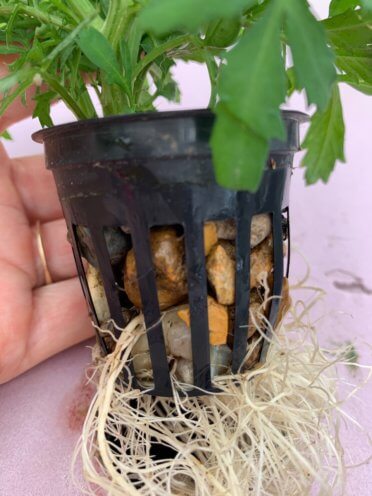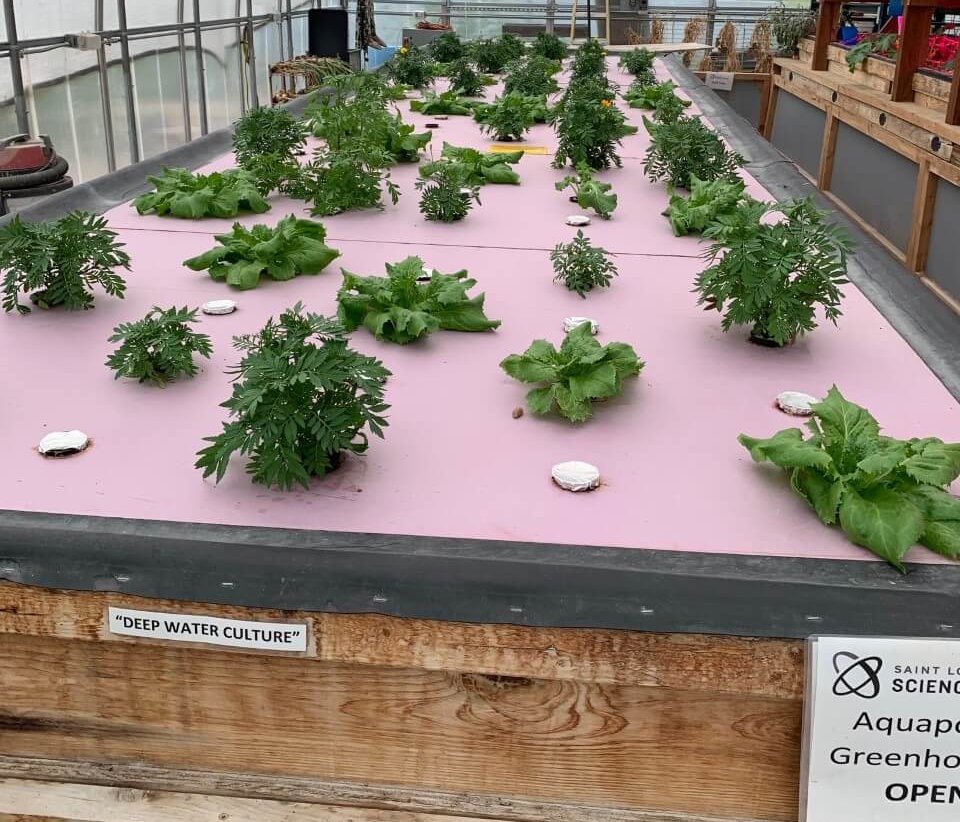While we patiently wait for the pests to make their next move, it’s important to talk about what exactly is in our greenhouse and how that environment affects how and what we grow. It’s time to explore the unique and wonderful world of aquaponic farming.
When visitors come to the greenhouse, we like to ask them one simple question: what do you think a plant needs to grow? Most people guess the answers pretty easily: sunlight, water, nutrients, air, soil. That last one, however, gets a little more complex. What exactly about soil is important for plants? Does a plant specifically need soil to grow? Duckweed can grow in water without attaching to anything at all. So, what gives?

Soil does two main things for plants. First, soil provides structure. As a plant grows from a seed, it grows both out of the ground and into the ground. Plants weave their roots around the soil and rocks to set themselves in place. That way, rain and wind can’t knock the plants around or move them. Second, soil acts like a sponge for nutrients and water. Plants absorb both nutrients and water through their roots, and it’s the soil that can store those things in the ground so that the plants can take them when they need it.
So, are there other ways we can give plants structure and nutrient storage without using dirt? This question is important because there are lots of areas with poor soil quality or lack of soil. If we want to grow plants in the city or in a desert, it’s definitely going to be a hard task. Aquaponics and hydroponics are one of the best ways to work around soil limitations. A lot of people associate aquaponics and hydroponics with growing plants in water, and they’re mostly right. What’s different about the water in aquaponic or hydroponic is that nutrients are mixed in with the water. So, when the plant absorbs water, it’s getting nutrients at the same time. Growing plants in water doesn’t provide structure, though, so aquaponic/hydroponic farmers use a variety of materials called growing mediums. In the GROW greenhouse, we use simple pebbles. Even though they hold no water on their own, they’re fantastic for plant roots to wrap around and secure themselves. Other materials farmers like to use include rockwool, a type of rock that is spun into a sponge, and coconut husks.
The difference between hydroponics and aquaponics is the way nutrients are put into the water. With hydroponics, synthetic or natural chemicals have to be poured into the water by us. With aquaponics, the nutrients are provided by fish poop, which sounds gross but makes a lot of sense when we think about regular farming. Have you ever heard of cow manure? It’s the same idea: cow poop has a lot of nutrients in it that plants like, so by mixing the poop into the soil, you can give the plants a good boost. We have a stock of about 180 bluegill in our aquaponic system, and their poop is what provides nutrients to our plants.
Hydroponic and aquaponic farms are becoming increasingly popular as the demand for more and fresher produce becomes greater and greater. In addition to the benefits of forgoing soil, aquaponics and hydroponics can more easily be done in greenhouses, which is great for colder areas where greenhouses can be used to grow plants year-round rather than just a short growing season.






